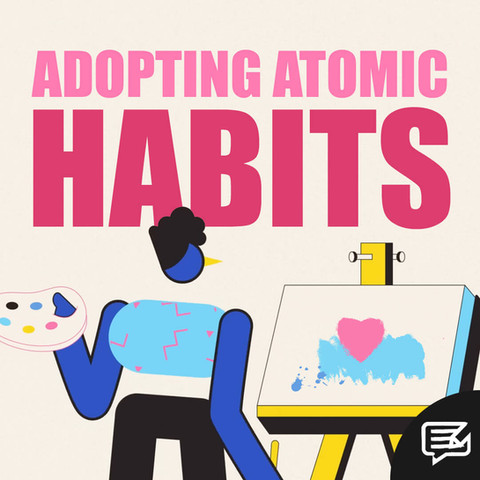
24.05.22
THE FOUR-DAY WORK WEEK
Pre-pandemic, ideas to improve work-life balance were often abstractions floated by leaders, who could get away with paying them only occasional lip service. However, COVID-19 and the ensuing lockdowns provided a stark assessment of employees’ working conditions.
“The Great Resignation” worker exodus has sent many employers into a tailspin. As businesses scramble for incentives to retain staff and attract job seekers, the idea of a four-day working week is gaining traction.
Are we working Monday to Friday just because it's what's "expected"? Whose idea was it to begin with? And most importantly, if a four-day working week has legs - will three-day weekends become the norm? Will every weekend feel like a bank holiday?



Faced with general resistance about going back to “normal”, companies have been forced to get creative, or at least flexible, to accommodate the demands of the 2022 workforce. Some countries have taken things a step further, funding research that could shape the working week of the future.
For an overall picture, the most solid data we have to rely on comes from Iceland. The country was one of the first countries to trial the four-day working week. Last year it was reported:
“Trials of a four-day week in Iceland were an ‘overwhelming success’ and led to many workers moving to shorter hours. The trials, in which workers were paid the same amount for shorter hours, took place between 2015 and 2019.”
A range of workplaces took part, including preschools, offices, social service providers, and hospitals. Many of them moved from a 40-hour week to a 35 or 36-hour week, researchers from UK think tank Autonomy and the Association for Sustainable Democracy (Alda) in Iceland said.
“It began six years ago, starting with some of the more stressful public sector roles. The outcomes justified the trial's expansion to most of the public sector and some from the private, so that 86% of the working population is covered by it.”
In the UK, the Scottish government was the first to publicly commit to four-day work week trials that will begin in 2023. Back in September, the BBC reported:
“Today's new report comes from IPPR Scotland (the left-leaning Institute for Public Policy Research), offering advice on those trials, and pointing to some employers and countries that are making this happen.”
A wholly unsurprising 80% think they'd prefer a four-day week. The same proportion, and probably the same people, say it would improve their wellbeing.
For employers? It's maybe not so attractive.
The theory is to be tested in at least one trial by the Scottish government, as promised in the SNP election manifesto earlier this year. The BBC article continues:
“IPPR Scotland is suggesting a Low Hours Commission, to help drive this forward, and a Scottish trial across sectors. They want to see how this works in non-office employment, on lower pay, and among those with condensed or part-time hours.”
It’s hard to get people to agree on much these days, and 80% is an impressive, if isolated, figure. The inclusion of those in non-office employment is novel and would be a serious shake-up of the status quo across the board.
So far, so intriguing. Inevitably, there’s a cost – the time must be made up somehow. What does a four-day week actually look like in practice?
“It aims at a bit of management alchemy: reduce hours by 20% without hitting productivity, measured in output per week, so that pay can remain the same.”
It’s not difficult to understand why workers feel they could be more productive with less time. Removing office life from the equation while we worked from home, showed just how much time is wasted in a setting with frequent distractions. This is before you consider the ‘dead’ time spent commuting, where delays caused by traffic, train strikes and condensation-ridden, full bus replacements run counter to my understanding of Zen.
Would any stress associated with condensing your workload into a shorter period of time cancel out the wellbeing aspect? Reducing the dross in your workday is one way to sharpen focus, while being well rested from that extra day off, in theory, means you’ll approach tasks like a ninja.
“More often, the idea seems to be ensuring that workers getting three days off per week enjoy greater wellbeing, and therefore they're more productive. That survey suggests 65% of workers think a shorter working week would make them more productive.”
The productivity point seems to be backed by Parkinson’s law - an observation made by historian Cyril Parkinson in an article for the Economist in 1955 – that states work expands so as to fill the time available for its completion. In other words, the more time you have to do something, the more time it’ll take.
If we reduce the time allotted to complete work, can efficiencies be made without compromising on productivity and targets? That’s what happened in a pre-COVID trial in New Zealand.
“Monitoring from an Auckland university found impressive results, of productivity (measured per hour) going up 20%, while there were significant improvements in the number thinking they had improved work-life balance.”
Back in 1926, one Henry Ford touted the five-day work week becoming standard for similar reasons - increased productivity and more time for workers to spend with family. He also had a strategy: one extra day for recreation meant workers would have more time to spend purchasing goods, including vehicles.
Similar to Ford, a four-day week could be part of a bigger solution strategy for governments. Take Japan’s example:
“Japan, which is looking at reduced hours to tackle two of its problems: chronic over-work and long-hours culture, and a particularly acute demographic challenge of its very low birth rate, and the world's highest proportion of the very elderly.”
So, more time to... increase the birth rate. Of course, childrearing is time-consuming and expensive. An extra day off per week, if rotated by parents, means an overall cut in childcare costs. Would that be incentive enough to consider becoming a parent, if you’re on the fence? More equal sharing of household and childrearing duties would undoubtedly be a welcome upshot of a four-day week policy.
“As women are more likely to be in these low-paid part-time roles, one positive that could result might be an acceptance of lower hours as the norm - leaving men to use their increased leisure hours to take on more unpaid family and household roles.”
This view is shared by 4 Day Week Global - a not-for-profit community who advocate the four-day work week as a part of the future of work. They state:
“We encourage business, employees, researchers, and government to all play their part in creating a new way of working which will improve business productivity, worker health outcomes, stronger families and communities, challenge the gender equality issue, and work towards a more sustainable work environment.”
All things considered, a four-day work week sounds promising. One thing is for sure: the pandemic has shaken up perspectives on how easily we can adjust to change, when it’s enforced. It opened minds and catalyzed a re-assessment of how we work now, demonstrating the enhanced freedom to shape our working life that technology affords. Now really is the time to ask the big questions about why we work the way we do, and to apply innovative, tested methods to better our quality of life.
Perhaps we’ll see the “Friday Feeling” develop a whole new meaning over the next decade. I, for one, can get on board with that.

























































